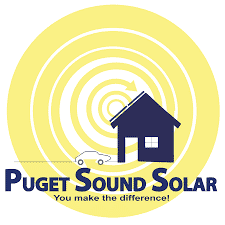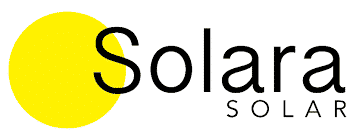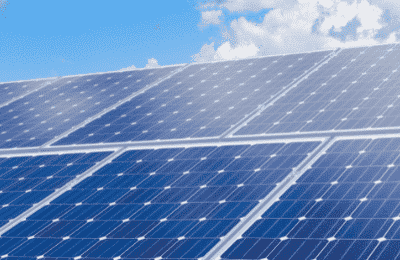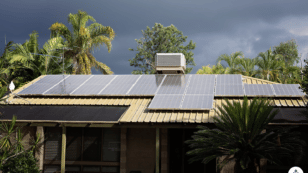
Washington Solar Incentives (Rebates, Tax Credits & More in 2024)
In this guide to saving on solar in Washington using incentives and rebate programs, you’ll learn:
- What solar incentives are there in Washington?
- How do the available solar benefit programs affect the cost of solar panels in Washington?
- How do you file for the solar incentives in Washington, and which ones are the most valuable?
Each product and or company featured here has been independently selected by the writer. You can learn more about our review methodology here. If you make a purchase using the links included, we may earn commission.
Do Washington Solar Incentives Make It Affordable for Homeowners to Go Solar?
Going solar will always be an expensive endeavor, but the perks and rebates offered in Washington help to make it a more affordable home improvement.
The typical photovoltaic (PV) system in Washington cost is around $33,600, which is a few thousand dollars more costly than for most U.S. residents.
This estimate takes into consideration the system size — around 10 kilowatts (kW) — needed to offset the above-average energy bills in the state and the average cost per watt for PV equipment (around $3.36).
Washington State has a rather progressive Renewable Portfolio Standard (RPS) mandating that by 2045 all of the state’s electricity must be generated from clean energy sources. Despite this high standard, there are relatively few incentives available to make solar more affordable. However, those that are available can save you thousands on your conversion costs.

Puget Sound Solar

Local Service
Average cost
Pros
- Representatives are experts on local policies
- Many years of experience
- Comprehensive service offerings
- Excellent reputation
Cons
- Limited service area

Solara Solar

Local Service
Average cost
Pros
- Outstanding customer service
- Representatives are experts on local policies
- Many years of experience
Cons
- Limited service area

Blue Raven Solar
Pros
- Industry-leading in-house financing
- Competitive pricing
- Excellent reputation
Cons
- Doesn't offer solar batteries (coming 2022)
We’ll include a list of all the incentives available in your area in the table below, including an estimate of how much each can save you.
| Solar Incentives in Washington | Incentive Type | Description | Occurrence | Estimated Dollar Amount You Can Receive |
| Federal Solar Investment Tax Credit (ITC) | Federal | Provides a credit to your tax burden in the amount of 30% of your total system costs | One-time: The credit value gets assessed once when you first file for this perk but available credit can be rolled over for up to five years | $10,080, on average |
| Renewable Energy System Incentive Program | State | Provides credits for all solar energy your panels generate. The maximum credit is $5,000 per year. **This program has reached its budget cap. | Ongoing: Feed-in tariffs are earned continuously for the first eight years your system generates electricity | $720 per year, on average, or $5,760 over the system lifespan |
| Renewable Energy Projects Sales & Use Tax Exemptions | State | Waives all sales tax on PV equipment, including panels, batteries, inverters, electric vehicle (EV) chargers and more | One-time: The savings from this perk will be enjoyed once — when you purchase your solar panel system | Depends on local sales and use tax rates — can be over $2,184 |
| Net Metering | Local | Net energy metering credits all overproduction, which can be used to offset energy bills. | Always in Effect: You’ll continuously earn electric bill credits for as long as your system generates power | Varies depending on your system size, monthly energy consumption and more |
| Local Incentives | Local | Perks provided by local utility companies, cities and other agencies | Varies depending on the incentive | Varies based on the incentive, your system size, what you pay for your panels and more |
What Do Washingtonians Need to Know About the Federal Solar Tax Credit?
The ITC or Federal Solar Tax credit is a credit established by the federal government that has been around since 2005 and has consistently been one of the most valuable solar perks in many states throughout the country. Originally, the tax credit was set to decrease in value in 2022 and 2023 and then expire in 2024.
The Inflation Reduction Act (IRA) signed in 2022 by the federal government extended the program and increased the credit for systems installed in 2022 and 2024, including 2022 installations completed before the bill was signed in August. Below is a breakdown of the current rate schedule:
- All systems installed from 2022 through 2032 will receive a 30% credit
- Systems installed in 2033 will receive a 26% credit
- Systems installed in 2034 will receive a 22% credit
- Systems installed in 2035 and beyond will receive no credit
Once your credit value is assessed, it gets applied to any income taxes you owe. You can take the full credit the first year you install your system, or you can take partial credits for up to five years.
Since the typical cost of converting to solar in your area is around $33,600, the average credit value is an incredible $10,080. You might get more value if you install batteries along with your solar array to provide power through outages. This is a common option in the Pacific Northwest, given the frequency of power outages.
How to Claim the Federal ITC in Washington
Applying for the federal credit is done when you file your taxes for the tax year in which your system was commissioned. You can follow the steps below to take advantage of this perk.
- Step 1: Complete your conversion.
- Step 2: When you’re ready to file your taxes after your system is installed, go to the Internal Revenue Service’s website and print out form 5695.
- Step 3: Fill out the form entirely. You can include credits earned for solar water heaters, biomass systems, geothermal systems and other clean energy products, if applicable. For your solar system, you’ll need the capacity, the total cost and information about your installation company.
- Step 4: File the form with your taxes. Your accountant, if you have one, can usually help with this step.
Tax software like TurboTax automatically prompts you for this information, so you can skip the steps above and just answer the related questions in the software when filing your taxes.
EcoWatch’s Opinion on the Federal ITC in Washington
In our opinion, the federal credit is the single most valuable perk you can take advantage of as a Washington solar customer. The average credit value is over $10,000, and you only need to spend a few minutes filling out a two-page form to apply for the credit.
Plus, unlike some other local perks that are exclusive to specific residents, this incentive is available to everyone in the state.
It’s important to remember that the federal credit is not a solar rebate, so you’re not guaranteed to get the full $10,000. If you don’t owe at least that much in income taxes over the five years following your installation, then you’ll lose part of the credit. You should be able to take the full amount if you owe $2,000 or more per year for five years.
Watch Below: Learn How You Can Profit Off Of the Extra Energy Your Solar Panels Produce
What You Should Know About the Renewable Energy System Incentive Program in Washington

Since the typical 10 kW system in the area is expected to generate around 1,000 kWh per month or 12,000 kWh per year, the average annual credits earned will equate to about $720. The program lasts for eight years following installation for a total average credit of $5,760.
Unfortunately, there are budget caps for this program, which were reached in 2021. As a result, most solar customers in the state can no longer apply and will not get compensated for their energy generation.
How to Claim the Renewable Energy Incentive in Washington
At this time, WSU is no longer accepting applications for this program, as the budget cap has been reached. If additional funding is approved at some point in the future, you can follow the steps below to become eligible for the perk.
- Step 1: Complete your system installation.
- Step 2: Check the WSU website to see if applications have been reopened. If they have, click “Apply Now.”
- Step 3: Fill out the application with information about your system and personal details. A program administrator will reach out to you with additional steps and to complete the application process.
EcoWatch’s Opinion on the Renewable Energy Incentive Program in Washington
Feed-in tariffs are a great way to incentivize solar adoption, so we’re huge fans of this perk. It’s massively beneficial for customers who can take advantage of it, which is why the program has been so popular in the area.
Unfortunately, the budget is so limited that new solar customers cannot apply. We’d love to see the limitations increased or even lifted for this perk to make it more valuable and more widely available.
What You Should Know About the Renewable Energy Projects Sales & Use Tax Exemptions in Washington
In an effort to keep the cost of converting to solar energy as low as possible, the state waives all sales tax on PV equipment. That includes all components of your system and the installation labor.
Given the average local system cost — $33,600 — and the state sales tax rate of 6.5%, this perk would save you an average of $2,184.1 However, local governments in Washington also impose additional sales and use taxes that can drive the total sales tax rate over 10% (10.25% in Seattle)2.
State law provides that solar equipment is also exempt from local sales and use taxes, so on a system cost of $33,600 and a sales tax rate of 10.25%, your savings would be bumped up to around $3,444. Your specific savings in your locality will be reflected in your solar quote and final system price.
This perk is available to all solar customers in the state carrying out solar upgrades, including small businesses, industrial customers and more.
How to Claim the Sales Tax Exemption in Washington
The best part about this perk is that it is entirely automatic, so it doesn’t require any effort on your part to take advantage of. You simply get solar equipment installed on your home, and the sales tax will be exempted from your total bill.
EcoWatch’s Opinion on the Exemption for Sales Tax in Washington
We love to see automatic perks like the sales tax exemption for solar conversion, as it lowers the barrier to entry into solar power and doesn’t require any application process. Perks like this are a great way to incentivize and legitimize solar, as well as to keep the financial burden of converting as low as possible.
Net Metering in Washington

The credits you accrue through this program apply to future electric bills, so you can more easily reduce your utility bills or even eliminate them entirely. NEM is more beneficial in your area than in many other states because the monthly energy consumption is above average, so there’s more to offset.3
Although NEM is mandated for all local utility providers, the rate at which you’re credited for power sent to the grid isn’t set. Some companies may offer the retail rate per kWh, while others offer a less beneficial avoided-cost rate or wholesale rate.
We should also mention that NEM can apply to community solar projects, so you can reduce energy costs using this perk without actually installing panels on your roof if you opt into community solar.
It’s important to note that NEM policies are going through some changes across the country, mostly for the worse. Some states are seeing the programs be discontinued, while others are seeing retail rates drop to less appealing options. There’s no evidence that the net metering program in WA will see a decrease in the coming years, but it is possible.
How to Enroll in Net Metering in Washington
Enrolling in NEM requires a simple application, which is usually provided by your utility company. However, most residents will find that their solar installation company handles the process for them, so enrollment is more or less automatic. You can follow the steps below to make sure you’re all set up to enjoy this perk.
- Step 1: Call your utility provider to ask if you have a bidirectional meter installed on your home. Most meters in the state have already been upgraded according to interconnection standards, but it’s worth checking anyway. You can get one installed for free if you don’t already have one.
- Step 2: Choose a solar contractor to tackle your solar project. We recommend asking a rep at the company if they will apply for NEM for you. Most will do this on your behalf, but again, it’s worth confirming.
- Step 3: Complete the installation process.
- Step 4: Monitor your utility bills for a few months to confirm that credits are accruing. You’ll likely see a significant drop in your total charges as well as credits accruing for excess power sent to the grid. You may not see credits if your system is undersized for your energy consumption.
EcoWatch’s Opinion on Net Energy Metering in Washington
We love to see NEM programs, as they provide a few major benefits to solar customers. These include boosted energy savings over time, reduced electric bills, a lower effective electricity rate and more value overall from solar conversion.
Best of all, most reputable installers in the state will enroll you automatically, so there is often no effort required on your part to take advantage of this incentive.
We would love to see the retail rate mandated for NEM credits, but with policies disappearing in other states, we’re happy just to see the energy program available at all.
Local Solar Incentives in Washington
The federal and state credits mentioned above apply to all residents, but there are some local perks available from different entities that you might be eligible for as well. We’ll include some information about additional incentives below.
- Clark Public Utilities Solar Energy Equipment Loans: This solar financing program is available to Clark County residents and provides affordable loan options to reduce the up-front cost of solar conversion. These solar loans can cover up to $30,000 in system costs, and loan terms can be for up to seven years.4
- Grays Harbor Net Metering: Residents of Grays Harbor County also have access to NEM, but the local program guarantees the full retail rate for energy credits.5
- Seattle City Solar Permit Requirements: Seattle implemented some city-specific regulations for solar permitting. The legislation helps expedite solar permits and keeps the fees for applying to a minimum to help reduce the up-front conversion costs.6
There might also be energy efficiency incentives offered in your area that don’t apply strictly to home solar systems. We recommend contacting your power company to confirm if there are additional perks you can take for efficiency home improvements.
Which Tax Incentives Are The Best In Washington?
Above, we’ve mentioned all of the perks available for solar adoption in The Evergreen State. Some of these incentives provide more value overall than others and should be prioritized, in our opinion.
First, we suggest that every solar customer in the state take the federal credit. This perk is a breeze to apply for and provides an average value of over $10,000. It’s available to all residents as well, provided they convert to solar and file for the credit before 2034.
NEM is the next most valuable perk in the local solar industry, in our opinion. This benefit program is also available to all residents and can help push the average solar savings close to or beyond $14,000, especially for those who get the full retail value per kWh. NEM also helps pay off your equipment more quickly and adds more value to your panels overall.
The sales tax exemption is also hugely beneficial and could save you over $2,100 on local installations. You don’t need to file for this one, but we’re still mentioning it, given the value and the fact that it applies automatically.
What’s The Near-Term Outlook For More Incentives In Washington?
As of this writing, there are no plans for additional perks to be made available to residents. However, since the state has an aggressive RPS goal, we do expect that more incentives will crop up as we approach the deadline of 2045. Unfortunately, there’s no indication of when more benefit programs will be created.
The cost information presented in this article is derived from a comprehensive analysis, incorporating data from multiple industry sources. The average cost per watt per state was calculated based on figures from Consumer Affairs, Energy Sage, and Berkeley Lab’s Electricity Markets & Policy Department. Additionally, monthly energy consumption and the average monthly cost of electricity were sourced from the U.S. Energy Information Administration, ensuring a well-rounded and accurate representation of the information presented.
FAQs for Washington Tax Incentives
We get a lot of questions about incentives for solar conversion from residents in your area. We’ll answer some of the questions we see most often below.
SREC programs monitor the energy production of your solar energy system and compensate you for every 1,000 kWh you produce. The credits hold a real-dollar value in areas where utility providers need to comply with RPS goals and pay down their fossil fuel consumption.
The WSU incentive program is somewhat similar to an SREC program, but the credits are significantly lower and aren’t purchased by electric companies. Additionally, the WSU program is no longer accepting applications, whereas SREC programs generally don’t have caps that limit participation.
There are no pieces of legislation in the works that are expected to increase incentives for PV systems in the next two years. However, as mentioned above, the lofty renewables standard in the state does leave room for additional perks to arise. We expect some other incentives to be available in the next two decades, but it’s unlikely they will be created in the next two years.
The Inflation Reduction Act (IRA) made some positive changes to the federal tax credit. First, it extended the program by an entire decade. It was originally scheduled to close in 2024 and is now available until 2035. Additionally, it raised the credit rate for systems installed from 2022 through 2024 back up to 30%.
The IRA also made some changes to EV credits, which now top out at around $7,500. It prioritized vehicles sourced and manufactured in the U.S. as well.
There are no plans to make perks less available or less appealing in the state in the next two years. If something were to change, though, it would likely be NEM.
This policy has been discontinued or gone through a credit drop in several other states, so it’s possible that the program will disappear here. It’s more likely that municipalities and electric companies that offer the full retail value will drop the rate to an avoided-cost or wholesale rate, which the rest of the state uses.
Top Solar Installers in Washington Cities
Comparing authorized solar partners
-
- Representatives are experts on local policies
- Many years of experience
- Comprehensive service offerings
- Excellent reputation
- Limited service area
A+Solar Veteran
Having trouble deciding? Click below and use our process to receive multiple quotes instead:

 233k
233k  41k
41k  Subscribe
Subscribe 



